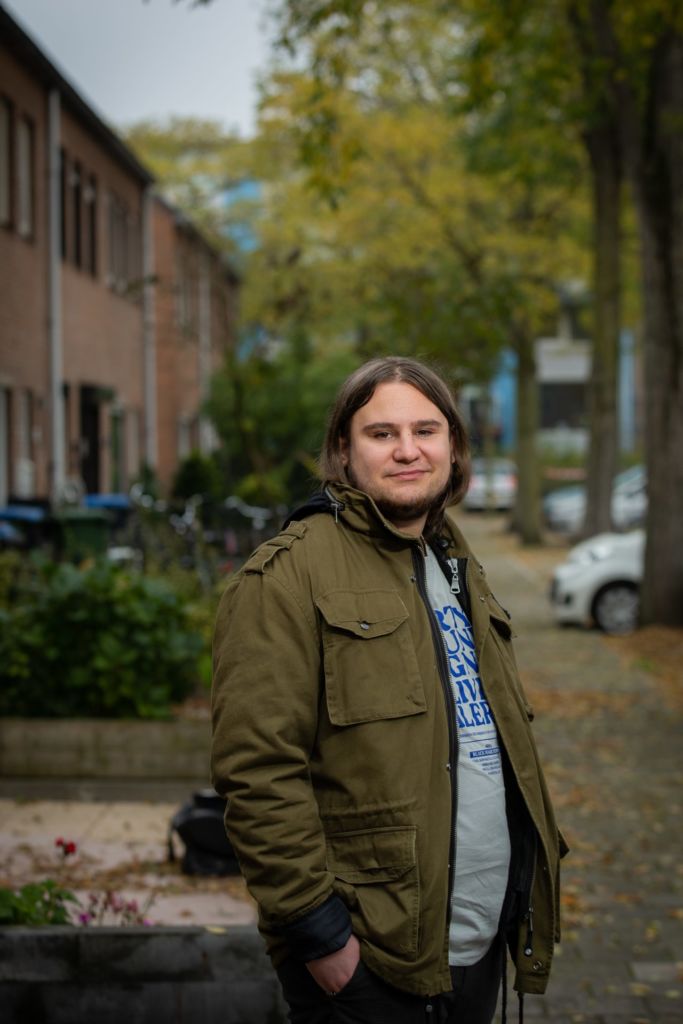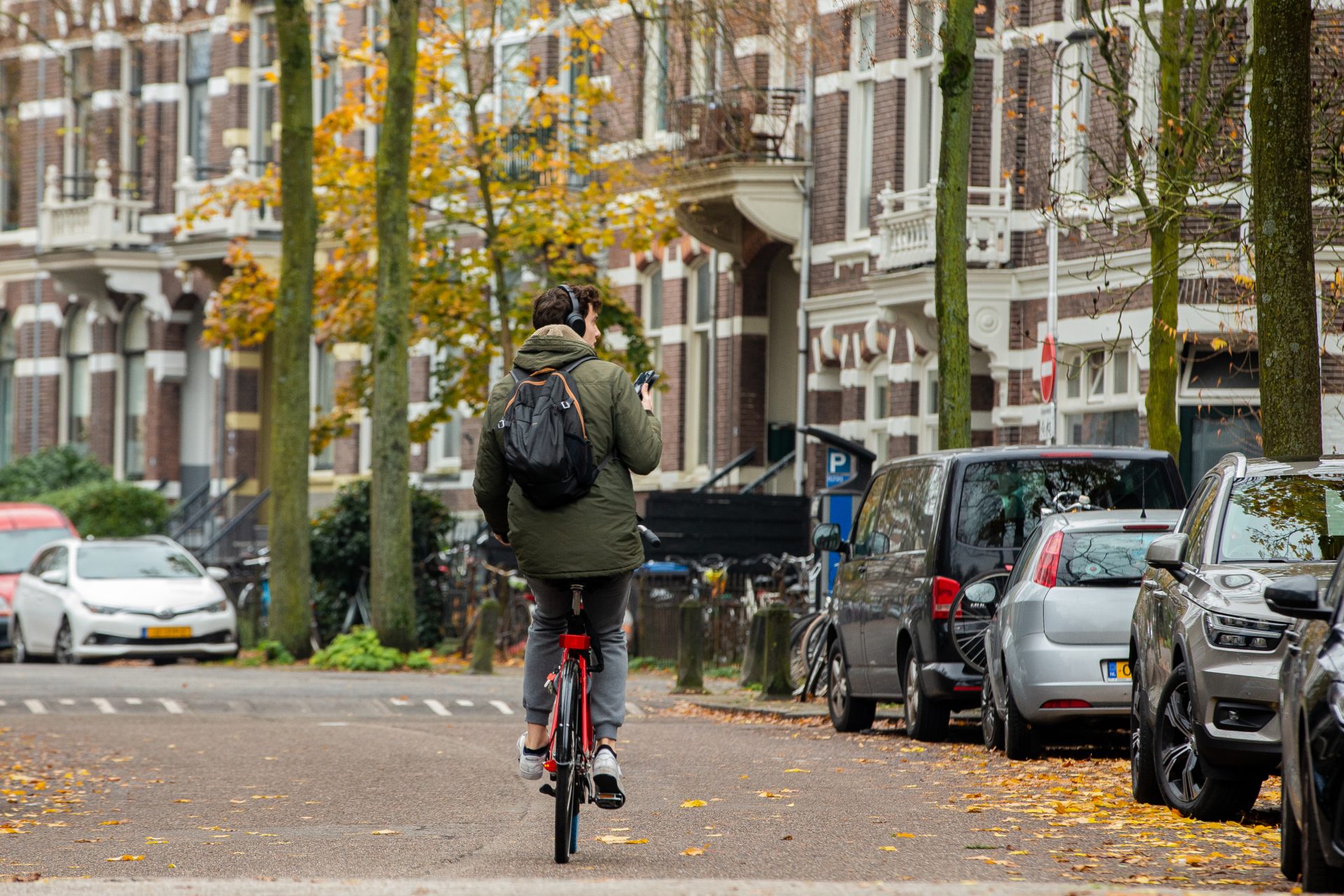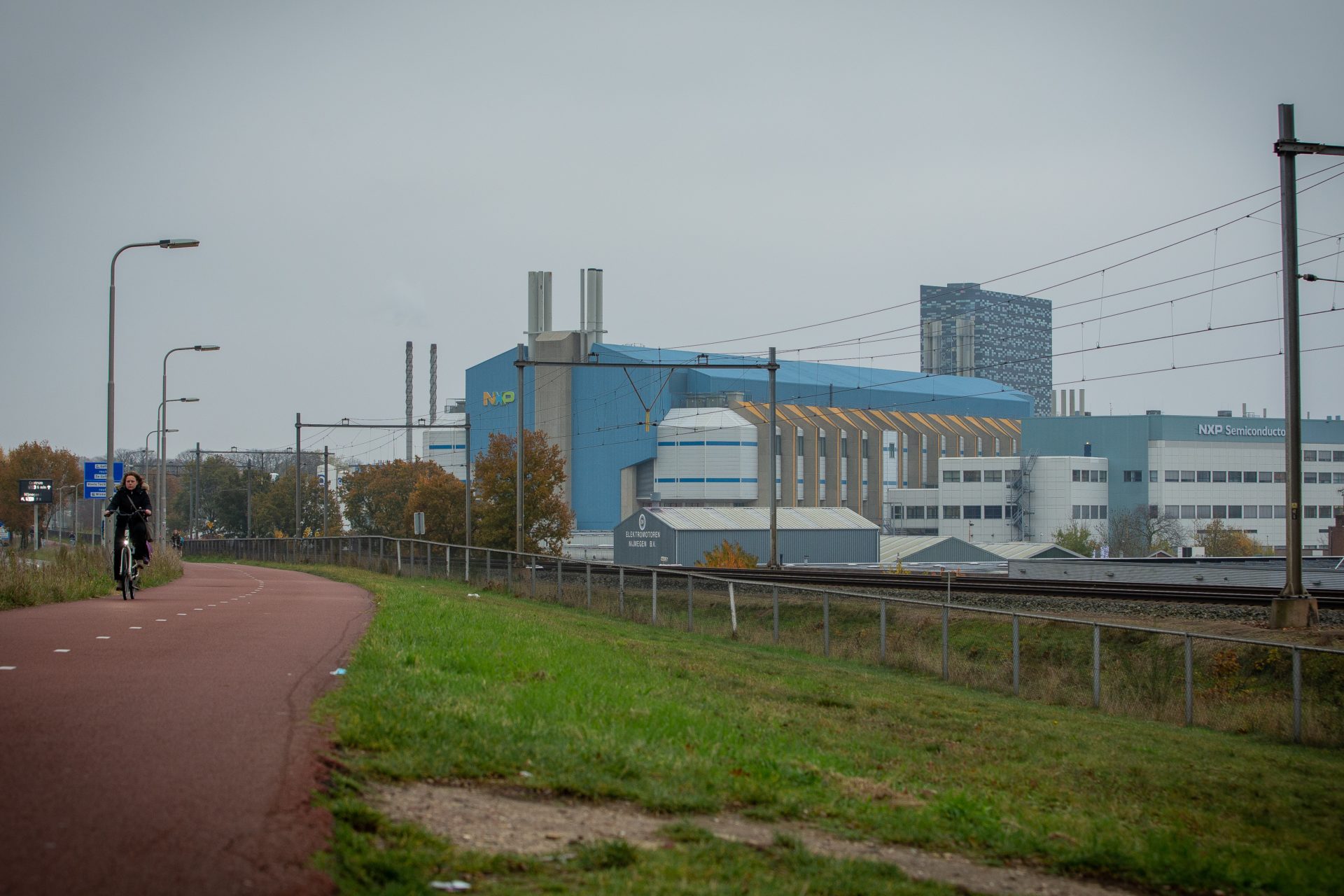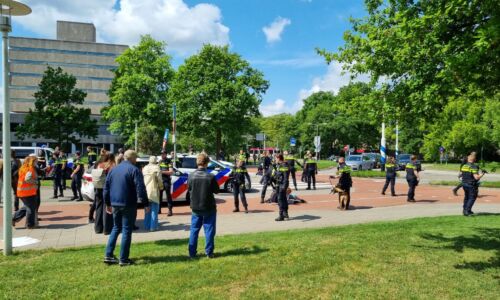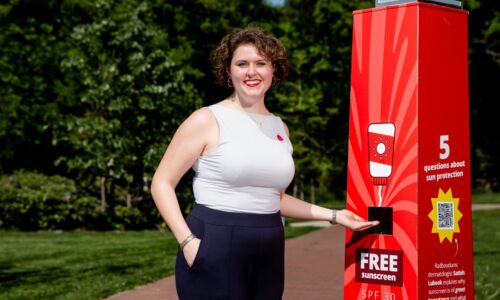In Bottendaal Swapfietsen are everywhere, while in Dukenburg there’s no student to be found – yet
-
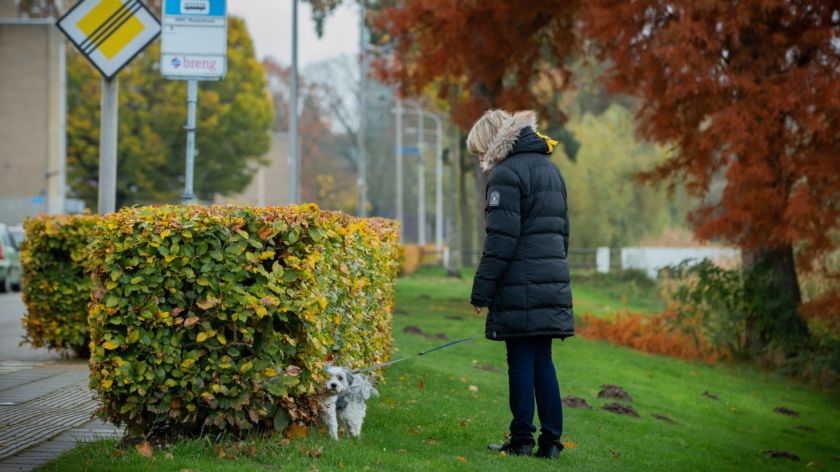 Neerbosch-Oost. Foto: David van Haren
Neerbosch-Oost. Foto: David van Haren
In Bottendaal and Nijmegen-Oost, student houses dominate the streets. Great for students, but maybe not so much for older couples or families with young children looking for a quiet place. For years, there have been calls to spread students more evenly across the city. But how can this be realised?
Neerbosch-Oost is a collection of typical 1960s houses, flats topped with satellite dishes, grass areas for dogs, and garages. Sandwiched between the MaasWaal Canal and a number of busy traffic roads, with only one access road, the Nijmegen city centre feels a world away. Peering between the trees, you can glimpse the towers of the NXP chip manufacturer on the Winkelsteeg business park.
Stories about drug use, trouble-making youths, and a ‘white exodus’ colour the image of Neerbosch-Oost. The latter refers to the daily stream of cycling parents who apparently prefer to enrol their child in a school outside the neighbourhood.
 As a rule, few students live here, the exception being Daniel Schömann’s (22) house in the Triangelstraat: an ordinary Dutch family home, which he shares with three international housemates and their cat. Daniel himself is from Cologne.
As a rule, few students live here, the exception being Daniel Schömann’s (22) house in the Triangelstraat: an ordinary Dutch family home, which he shares with three international housemates and their cat. Daniel himself is from Cologne.
‘I’m aware of the neighbourhood’s reputation,’ explains the Arts & Culture student at the communal kitchen table on the ground floor. ‘My housemates and I find it quite funny. One of them comes from Kansas City, where they have real no-go areas, places where you have to watch out for muggers at night. Here, the streets are always safe. Even children play outside after dark.’
Before settling in Neerbosch-Oost, Schömann had already got to know quite a few places in Nijmegen and surroundings. In 2019, he embarked on his study programme without having found a room. Since he came from Cologne, close to the German-Dutch border, he was not given priority by student housing agency SSH&. He ended up staying for a week on camping site De But in the Groesbeek woods. This was followed by two bungalows, an Airbnb in Nijmegen-Noord, and finally an expensive room of barely 7 m2 on the Wolfskuilseweg. Until he heard from a fellow student that someone was looking for housemates for a purchased house in Neerbosch-Oost.
An important perk of his current accommodation is the contact with his housemates. If he has any questions and remarks, Schömann can always contact his landlord – a friend of his Kansas housemate. It is quite a change from the situation on the Wolfskuilseweg. ‘That landlord just wanted to make as much money as possible.’
Swapfietsen
It is no mystery where Nijmegen students want to live. You need look no further than the countless Swapfietsen parked in the front gardens to conclude that neighbourhoods like Bottendaal and Nijmegen-Oost are popular among Nijmegen students. In preparation for this article, Vox consulted the post code data of Nijmegen-based Radboud students, which only reinforced this conclusion (see map).
Much has been said and written in past years about this student concentration, not least by residents’ platform Kamerbreed, which has been criticising municipal policy since it was first founded, in 2013. According to platform members, having too many student houses too close together affects quality of life for other residents. In some neighbourhoods, residents have been complaining for years about parties and other nuisance.
In past years, the issue was also increasingly raised in the municipal council. In 2018, Nijmegen introduced a permit scheme, which many landlords failed to obtain, leading to students being threatened with eviction. This culminated in a long legal battle involving lessors and the municipality, which was settled this year when the Council of State threw out the permit scheme. The municipality was only entitled to demand a permit for houses with a value below the National Mortgage Guarantee (€325,000 in 2021). The judge ruled that there was insufficient proof of a housing shortage in higher price categories to justify such a requirement.
‘We want to do more and are working hard to find new locations’
The municipality quickly came up with an alternative to prevent proliferation of new student houses. Since October, if you want to transform a family residence into separately rented rooms, you have to apply for an environmental permit. Unlike the permit system that the court rejected, this is embedded in what is known as the facet zoning plan, which makes it legitimate.
Room shortage
With this new permit system, the city administrators hope to protect quality of life in student districts. At the same time, Nijmegen still needs lots of extra rooms. Room shortage is already forcing students to fall back on hotels and camping sites, as Daniel Schömann did when he first arrived in Nijmegen. Others simply give up on the idea of moving out.
This is why, in early 2021, the municipality expressed the intention of creating an additional two thousand rooms. Half of these are to come from student housing agency SSH&, the other half from the private market.
But these figures are already outdated, says Marco Schoofs, Manager in Strategy and Housing at SSH&. In October, the Kences knowledge centre released alarming new figures forecasting a growing room shortage. Across the Netherlands, Kences estimates that there is currently a shortage of 26,500 rooms. It is expected that the number of students in the Netherlands living away from home will increase to 57,000 in the coming 8 years. The current construction plans are in no way sufficient to meet this future demand. ‘This is why we want to do more,’ says Schoofs, ‘and we’re working hard to find new locations, which also means expanding our search to a wider radius around the centre. We’re certainly not excluding neighbourhoods like Nijmegen-Noord and Dukenburg.’
The municipality would also like to see students move to other neighbourhoods so they are more evenly distributed across the city. This means that new student houses should not all be located in the popular areas, says alderman Jan Wijnia from his office at the City Hall. However, the municipality is not enforcing this with a student house quota, as is the case in cities like Groningen and Amsterdam. ‘Our approach is to steer with policy regulations that lessors have to comply with to be granted a permit. For example, there should be enough bicycle parking space and other residents should not end up sandwiched between student houses.’ The alderman hopes that these restrictions will ensure that student houses are more evenly spread across the city.
Wijnia is all in favour of a shared city, with different segments of the population mingling together, but he does not mention any areas where he would like to see a higher concentration of student houses. ‘We want to have a mix of population segments everywhere in the city. So we have to consider every single neighbourhood to see where we can house more students. We are in an ongoing dialogue with SSH& on this subject.’ The private market is more difficult to steer, he points out.
Boat trips
To entice students to relocate to the outskirts of the city, these areas have to be made more attractive. And there is much that can be done in this area, says Rob Jaspers, social geographer and former city reporter for De Gelderlander. Especially the slightly outdated Dukenburg – across the Maas-Waal Canal – could use a boost, says Jaspers, who has been advocating for a re-evaluation of the area for years. He even suggested that the city organise boat trips on the canal, as it has been doing for years on the Waal. The goal: to highlight the area’s potential.
‘A district like Dukenburg needs to have a story,’ he says, as we cycle along the canal. ‘What does this area have to offer? Think of things like the Berendonck [a nature and recreation area, Eds.], the Triavium skating rink, or the climbing centre. Also, many people don’t realise how green this area is.’
The kilometres’ long Maas-Waal Canal flows right through the heart of the city. ‘A greatly undervalued area,’ in Jaspers’ opinion. From the cycle path on the Hatert side, he points to the houses, that back onto the Canal. The canal banks are certainly not very attractive: no more than an obstacle to navigate on your way to the furniture retail complex or out of the city. Jaspers’ adage: ‘We must look at the city with new eyes.’
‘Nijmegen is quite a sprawling city, with lots of empty areas’
Just before the Hatert bridge, the former reporter stops by a fenced-off area with an old factory, a silo, and a house in serious need of repair. Weeds are pushing through the pavement. It takes some imagination, but Jaspers sees in this former mixed-feed company a potential cultural hotspot. ‘Throw in some restaurants and cafés, make space for artists, and you’ve got a location reminiscent of the Honig factory.’
Having passed the SSH& complex ‘Vossenveld’ and the sports fields of the Hatert football club, we enter the Winkelsteeg business park, soon to be the construction site of 500 temporary houses. The municipality has big plans for this area: Winkelsteeg will ultimately provide room for 4000 houses.
According to Jaspers, the transformation of Winkelsteeg is an ideal opportunity to connect the areas on the other side of the canal to the rest of the city. Currently it is a place people tend to avoid. Should this change, with the advent of new houses and good cycle routes, Dukenburg will suddenly feel much closer to the city. This is why Jaspers advocates for a new bridge for cyclists and pedestrians, linking Winkelsteeg to Dukenburg. ‘The big bridges we have now were built for cars, and they’re not very attractive to cyclists.’
Two worlds
Jaspers can count on support from freelance researcher Josse de Voogd, who lived in Nijmegen for many years. In his role as electoral geographer, he closely examined the last election results in Nijmegen and concluded that politically, the Maas-Waal Canal divides Nijmegen into two factions. On the Western side, inhabitants primarily vote for populist right-wing parties, while the other side is dominated by GroenLinks and D66 voters. It would be a good idea to create additional connecting routes between these two worlds, says De Voogd.
Bolstering Winkelsteeg as a residential area would also help. ‘Now it’s a kind of hole in the middle of the city. I think it would be better to fill it than to build houses in the open areas around the city.’ Either way, Nijmegen offers enough opportunities for denser housing, says the geographer. ‘Now that I live in Utrecht, I’m even more aware of it. We have nearly twice as many people there, on nearly the same area. Nijmegen is quite a sprawling city, with lots of empty areas.’
‘I totally understand why students don’t find this location ideal’
De Voogd does not see the benefit of randomly building a new SSH& complex on the other side of the canal, in Dukenburg. ‘The ultimate destination for students remains the Burghardt van den Berghstraat. Not Dukenburg – that’s for people who want a big garden. Students are in a different phase of their life, and if they want to go out, they’ll just cycle to town.’ Students would end up living in Dukenburg, but separate from the rest of the population. At most, the local supermarket would reap the benefits of a bit of extra profit.
Rather than attracting students, it would be better to make sure the other side of the canal remains attractive for the current residents, says De Voogd. ‘Make sure you keep the people whose economic situation is improving. At present, this group tends to automatically move away from older post-war districts, for example to newer districts. This is not improving liveability in these older neighbourhoods.’
For Neerbosch-Oost, with all its social housing, this is quite a challenge. But for the German student Daniel Schömann, it’s a good place to live for now, after all his wanderings around Nijmegen. ‘I totally understand why students don’t find this location ideal,’ he says. ‘But there’s a bus stop, and a train station around the corner. And the campus is only a 20-minute cycle ride away.’ Another advantage: Schömann owns a car and he can park it in his own driveway. What student can boast of that?
SSH& want to build more on campus
In its search for new locations, student housing agency SSH& has set its sights on one location in particular: the Radboud University campus. ‘Living on campus is really attractive for students,’ says SSH& manager Marco Schoofs. ‘Last year, we delivered Nestor, a beautiful new complex next to Radboudumc. We’d like to create more housing units on campus.’ It has, in the past, been suggested that the Erasmus and Spinoza buildings could be used to house students. The university has yet to decide on this but hopes to finalise temporary housing elsewhere on campus in the next academic year.
